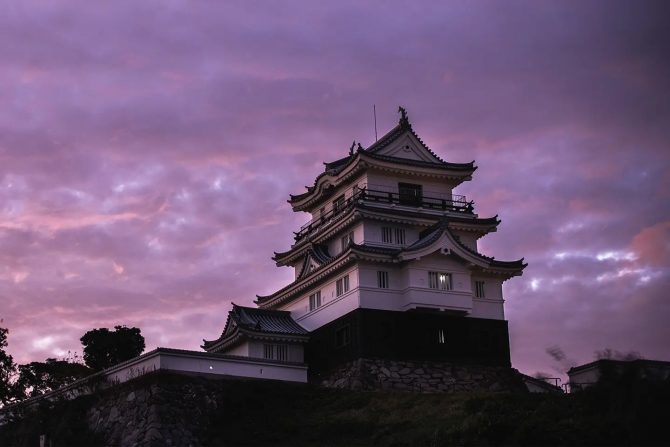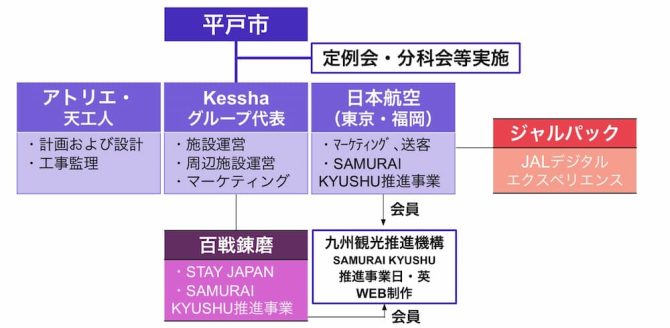Social Background
Under the current trend of Japan as a tourism-oriented country, Japan is in the midst of a major SDGs attuned movemnt to utilize cultural and historical buildings for tourism not only for the economic benefits but also in order to revitalize the region.
Traditional castles, which have primarily been the subject of protection and preservation, are no exception to this trend. There is now a great expectation for them to be utilized as places that can offer historical learning and experiences.
The city of Hirado, Nagasaki Prefecture, has a historic background flourishing as a gateway to foreign countries since the Edo period (1603-1868) and where, as a result, culture such as crafts, food, and art flourished. An attempt was initiated to utilize the Hirado Castle, one of the 100 most famous castles in Japan, as a tourist destination. In 2019, the city of Hirado publicly solicited applicants to renovate and operate the castle as an accommodation facility, and Kessha Corporation, Japan Airlines Corporation (JAL), and Atelier Tekuto were selected to operate the facility. Subsequently, Atelier Tekuto were selected by Hirado City in 2019 to design the renovation scheme for the accommodation facility. this became Japan’s first “castle stay”. Yamashita produced, designed, and supervised the renovation of one of the “Hirado Castle’s” Kaiju Yagura, transforming it into a luxury accommodation facility.
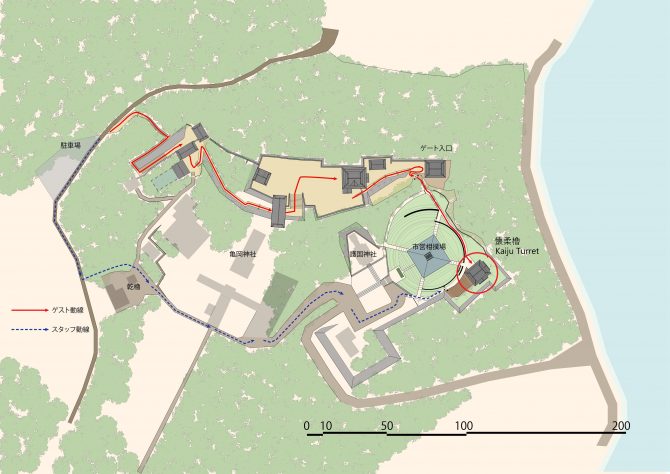 Layout Plan
Layout Plan
A symbol that connects new cultures
Hirado was a gateway to foreign countries during the Edo period. Among the representative Japanese exports of the time were ceramics, silver, tea and the “Rimpa” school of art, and Hirado flourished as a place of cultural exchange with the West. The “Rimpa” art style, one of Japan’s representative art styles from the Edo period, has had a great influence on Western artists since that time. Even today, it creates high added value by matching the values and aesthetic sensibilities sought by art sensitive people around the world.
Coming into contact with this history and background in the research on Hirado, Yamashita chose the concept of “Rimpa” with the hope of welcoming tourists from all over the world to Hirado City. His specialty, the use of local materials, was also incorporated throughout the building, aiming to make this historical building a symbol of connecting new culture from the past to the future.
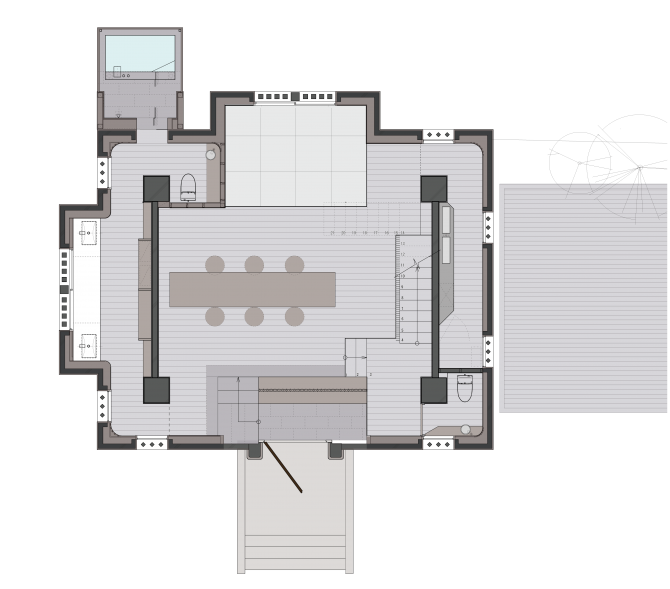 First floor plan
First floor plan
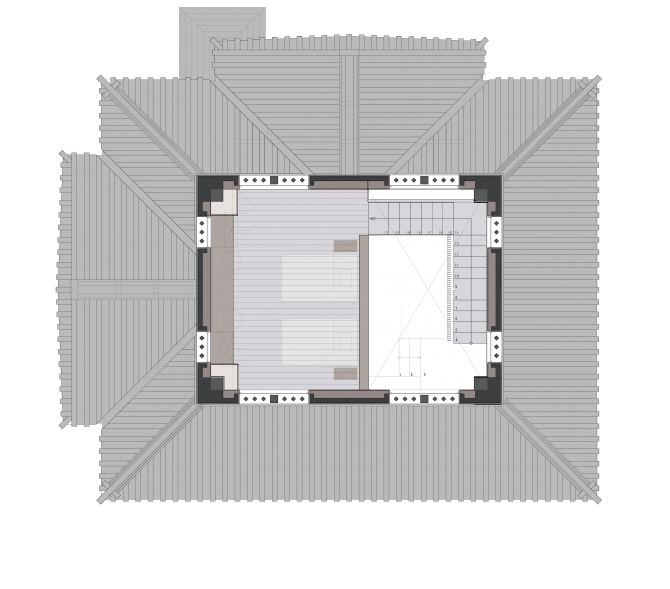 Second floor plan
Second floor plan
Realize new value creation
The exterior of Hirado Castle was composed of smoked roof tiles, pure white plaster, and a deep-colored board fence and the exterior was remodeled modestly, sticking to the original materials.
The interior had been used for a time as a warehouse, but at the time, even that use was abandoned. In reviewing the structure, it became clear that the original structre had enough strnght for the plans to be drastically changed. The multilayered latticework at the entrance, gold leaf-inspired wall and ceiling finishes, cast metal staircase railings, rare gold veneers on the doors and furniture, and paintings by Takahide Komatsu, one of Kyushu’s leading young artists, were added added on the main feature walls as well as throughout the interior.
1 2

